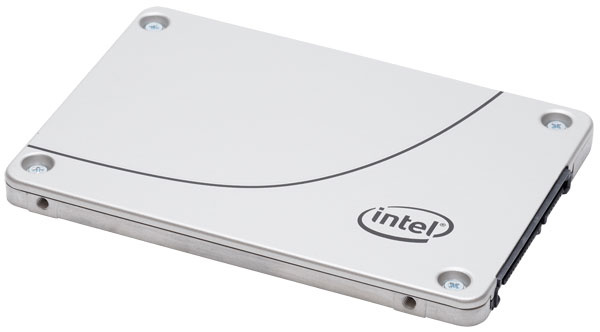Intel DC S4500 / DC S4600 - SSD to store data
Intel continues heading into a headless future. The new SSD DC S4500 and DC S4600 series are designed to replace HDD in servers and storage systems. Made on Intel 3D NAND technology of the second generation, SSD have a volume of up to 4 TB. Performance indicators are up to 72k / 33k IOPS for the S4500 and 72k / 65k IOPS for the S4600 (read / write, randomly 4k blocks).

The disks received a new SATA controller, providing up to 30% performance boost on real mixed loads. The firmware update system allows you to do this automatically, without rebooting and losing speed. In general, the reliability index (Annualized Failure Rate, AFR) for new SSDs is more than 3 times higher than for specialized HDDs. The number of read errors is 1 sector per 10 19 operations.
The new SSD series is parallel to the recently released P4500 / P4600 series with a PCIe NVMe interface, so this step can be called an evolutionary development. But then we are waiting for a number of interesting and fundamental innovations - about them briefly under the cut.
So important changes in SSD for data centers that are waiting for us in the near future:

The disks received a new SATA controller, providing up to 30% performance boost on real mixed loads. The firmware update system allows you to do this automatically, without rebooting and losing speed. In general, the reliability index (Annualized Failure Rate, AFR) for new SSDs is more than 3 times higher than for specialized HDDs. The number of read errors is 1 sector per 10 19 operations.
The new SSD series is parallel to the recently released P4500 / P4600 series with a PCIe NVMe interface, so this step can be called an evolutionary development. But then we are waiting for a number of interesting and fundamental innovations - about them briefly under the cut.
So important changes in SSD for data centers that are waiting for us in the near future:
- New "line" form factor . Intel will move away from the traditional 2.5 "and 3.5" drive versions - the HDD heritage - and move on to flat and long constructs. This will increase the density of storage and achieve unprecedented results - up to 1 Pb per unit. In addition, this form factor is more convenient in terms of the geometry of the PCI Express slots.
- Using Intel Optane technology . Intel Optane can be used not only with traditional HDD. Equipped with an Intel Optane caching block, SSDs will also run even faster.
- Dual Port (Dual Port) SSD . Two SSD connectivity ports provide the redundancy and redundancy required for mission critical tasks. Such SSDs will be available as early as Q3 of this year.
